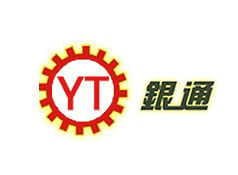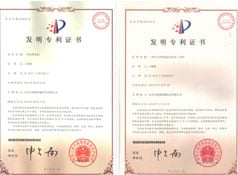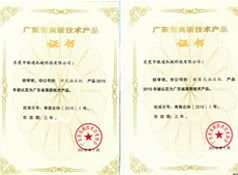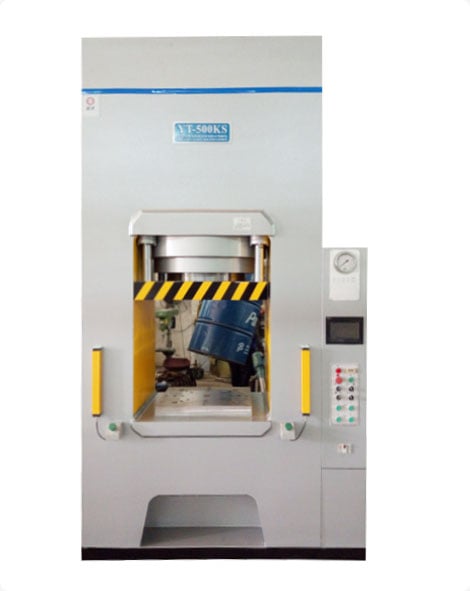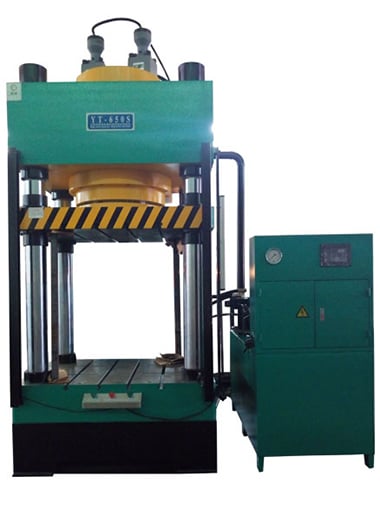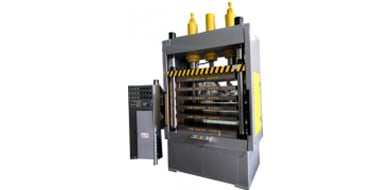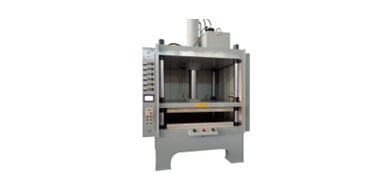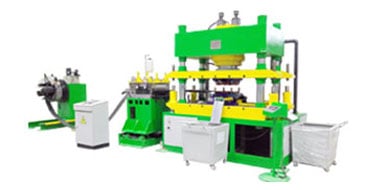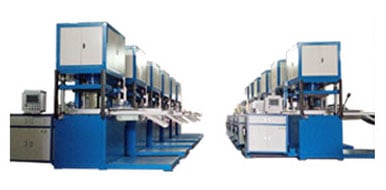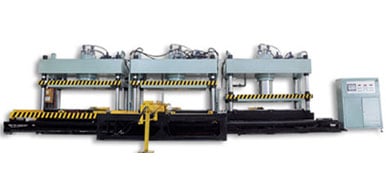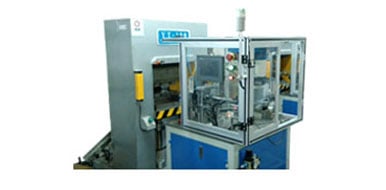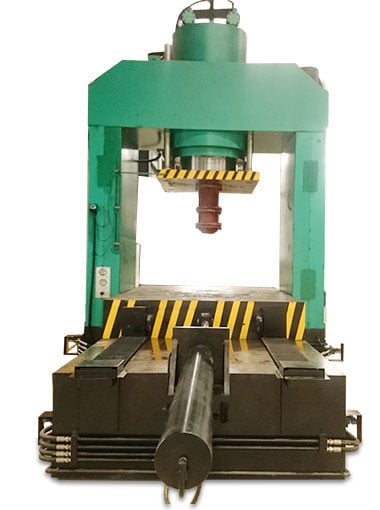How Much Force Can a Hydraulic Press Exert?
time:2023-11-28 views:(点击 881 次)Hydraulic presses use Pascal's principle to multiply force. According to this principle, any change in pressure within an enclosed incompressible fluid will be distributed evenly throughout its system without diminishing or diminishing.
This allows the machine to generate full pressing force throughout its stroke, enabling an operator to more precisely manage impact velocity.
Force per square inch
Force per square inch that a hydraulic press produces is an invaluable way of measuring its exerted pressure, which machinists need to know to select an appropriate machine for their tasks - for instance, punching through sheet metal would require using one with high tonnage - more pressure can lead to improved results!
Hydraulic presses operate by using two interconnected cylinders filled with hydraulic fluid; these are the Ram and Plunger. In accordance with Pascal's principle, any force applied to either of them will be multiplied across their surface area; meaning that even minimal amounts of mechanical force applied to one of them (Plunger in this instance) can create significant pressure between them that could crush objects placed between the cylinders.
Though hydraulic presses produce powerful output, they do not pose an imminent danger to workers. However, proper maintenance and inspection are critical in avoiding problems like oil leakage and debris buildup that increase risk to employees as well as increase shop productivity.
Hydraulic presses are often used for metal forming, which involves compressing material to shape it into desired forms. They produce large amounts of force which make them perfect for shaping different metal forms into shapes of various sizes and shapes, and their quiet operation reduces noise pollution in your workplace.
Hydraulic press machines may generate significant force, yet are less robust than equipment such as fly presses or power presses due to being powered only when needed, with their force generated not remaining constant over time. Furthermore, hydraulic presses can perform multiple functions at the same time while mechanical presses only offer single function options.
Force per square meter
A hydraulic press is a machine that uses pressurized fluid in an enclosed system to shape metal, plastic and other materials. It works on Pascal's principle, which states that pressure applied in one area of an incompressible fluid will spread throughout it all; this principle can also be found in hydraulic systems which use piston-type pumps for transmitting force from one area of a fluid to the next.
Hydraulic presses produce massive amounts of force, making them the perfect industrial tools. Their forceful output allows them to flatten metals, stamp parts and straighten bent metal. Furthermore, hydraulic presses are frequently employed in manufacturing and construction to test concrete compression strength.
Hydraulic presses measure their force output in pounds per square inch (psi). To calculate this force, one must know both the size of piston and pressure of hydraulic cylinder; once these details have been obtained, multiplying these figures together and divide by 2,000 to arrive at tons as an estimate of total force output.
Many industrial machines rely on hydraulic principles, including lifts and jacks. Automotive factories utilize hydraulic presses for molding metal parts while waste management facilities use hydraulic presses to compact waste into bales - as hydraulics offers the capability to generate high pressure without using too much energy.
As soon as you use a hydraulic press, it's essential to take precautions in order to avoid injury. Without caution, you could lose both hands or your life - gloves and safety goggles should always be worn to reduce this risk. Furthermore, understanding how a hydraulic system operates is also key, including learning how to read gauges quickly to adjust tonnage quickly; you may do this by closing one valve so the small piston connects directly with a tank of unpressurized water reservoir; opening another one then connects large piston with same reservoir; switching them back before closing both valves again afterwards - then closing one valve connects small piston with this reservoir; then switching back afterwards by switching back over.
Force per square foot
A hydraulic press can generate vast amounts of force, making it the perfect machine for many industrial uses. This force is determined by the size and pressure of its pistons as well as that of the hydraulic fluid, measured in pounds per square inch (psi). As pressure increases, more force will be generated; higher psi results in greater force generated, which makes forming metal parts quicker. Furthermore, it's often employed for processes such as flattening steel metal sheets, pressing bearings into their casings, and straightening bent metal surfaces.
The hydraulic press relies on Pascal's Law, in which any change in pressure of enclosed fluid is evenly transmitted throughout, to transmit force throughout its system of pipes and cylinders - this enables relatively small cylinders to apply much greater amounts of pressure across larger areas than would otherwise be possible with other tools. With this principle in place, hydraulic presses multiply a relatively minor force into something much greater for improved task completion than would otherwise be possible with other tools.
However, hydraulic presses have some inherent weaknesses: they don't transmit force evenly across their entire surface area and energy can be lost through frictional losses between components and within the system itself. Therefore, it is vitally important to ensure that work input equals output using either an easy formula or by conducting an in-depth system analysis.
Many factors can impact the performance of a hydraulic press, including its accuracy and speed. Despite these limitations, however, this technology remains an excellent solution for manufacturing applications that require precise control. More sophisticated hydraulic presses utilize sensors that monitor individual cylinders' position and speed in order to control force and speed independently with hydraulic valves.
Maintaining the health of a hydraulic press is vital to minimizing repairs and downtime costs, with oil leaks, overheating and poor hose connections being the leading causes. If these issues go unchecked they could lead to catastrophic failure and chemical hazard risk for workers - preventable by daily inspections and regular maintenance checks.
Force per ton
A hydraulic press is a machine capable of producing large amounts of force, and used in various applications. Its primary role is compressing materials; however, it may also be used to punch holes or punch other shapes into metal plates. A key component is its hydraulic cylinder that's filled with oil-like fluid. Its piston can move up and down.
For hydraulic cylinders, force is measured in pounds per square inch (psi), which is a unit of pressure. To calculate this force accurately, two pieces of information are needed: working pressure and piston diameter of the cylinder in question. You can calculate piston area by dividing diameter by 2. Once this data has been collected, multiply pressure times piston area together until you arrive at an answer - then divide by 2000 to convert to tons.
Presses use many components besides hydraulic cylinders to operate efficiently, including control panels, heat exchangers and pressure reversal switches. The control panels allow operators to monitor the status of all these components at any given moment - providing immediate information regarding any problems occurring during operation as well as potential solutions.
Hydraulic presses boast low maintenance costs, as they require few moving parts and are constantly lubricated with pressurized oil, leading to greater uptime than other pressing technologies which require more upkeep or disassembly for inspection and part replacement.
Another benefit of hydraulic presses is their fast speed operation. This enables operators to produce massive force in short bursts - ideal for metal forming. Furthermore, this speed helps save time during setup and changeover processes while decreasing risk to workpieces.
Hydraulic presses can generate thousands of tons of force, making them invaluable tools in many industrial operations. Hydraulics can form metal parts and stamp blanks for production more effectively than mechanical presses which require extensive floor space and may be unsafe to use compared with their compact designs and maintenance requirements; additionally they're more versatile since their settings can be tailored specifically for different applications than their mechanical counterparts.
Link to this article: https://www.ihydraulicpress.com/nsn/5468.html
Hot Articles
-
How to Make an Air Over Hydraulic Press
Hydraulic presses play a pivotal role in many facilities for fabrication, assembly and maintenance tasks. They use pumps to generate pressure that d……
-
How to Make a Hydraulic Hash Press
DIY Rosin Pressing involves an H-frame hydraulic press and set of rosin plates; this solution offers both cost-efficiency and customization of pre……
-
How to Make Hydraulic Press Project Safe
Hydraulic presses are versatile machines capable of joining components together, bending metal parts into shape, or holding materials while theyR……
-
How to Make Your Own Hydraulic Brake Press
Press brakes are indispensable tools in sheet metal fabrication. They enable bending and shaping metal sheets for various structures and products ……
-
How to Make Almond Oil With Hydraulic Press
Almonds are one of the world’s most widely cultivated nuts, with rich oil content and abundant vitamin E levels that have numerous health bene……
-
How Much Money Does the Hydraulic Press Channel Make on YouTube?
Launched in October 2015, this channel features videos showing objects being crushed with hydraulic presses – popular among viewers due to the……
-
How to Make a Coin Using a Hydraulic Press
Hydraulic presses play an integral part in many industrial processes. From shaping machine components to compacting waste and refuse, hydraulic pr……
-
Can You Make a Tortilla With a Hydraulic Press?
Hydraulic presses are tools designed to deform metal into desired forms by applying full force at each stroke, so as to achieve their purpose of def……
Latest News
-
How Much Does Hydraulic Press Channel Make on YouTube?
The Hydraulic Press Channel on YouTube features Finnish factory owner Lauri Vuohensilta crushing objects using a hydraulic press. It first gained ……
-
How to Make a Homemade Hydraulic Press
Hydraulic presses are devices that use hydraulic equivalent of mechanical levers for forging, clinching, moulding and punching operations. Hydraul……
-
How Much Is a Hydraulic Press?
Hydraulic presses are powerful machines capable of shaping, shaping and stamping materials with incredible precision and power that other machines s……
-
How to Make a Tabletop Hydraulic Press
Hydraulic presses utilize hydraulic fluid to apply pressure, often used to extract pins, bearings and other items from their housings. Hydraulic pre……
-
How to Make a Homemade Hydraulic Press Out of a Jack
Making your own hydraulic press from an old jack can save considerable money. Its effectiveness depends on an accurate unit diagram and quality co……
-
How to Make Your Own Hydraulic Jewelry Press
Richard provides instructions for building an affordable hydraulic press to create tasteful three-dimensional forms. You will learn how to size me……
-
How to Make Hydraulic Press Machine
The hydraulic press is a machine that utilizes liquid to generate force. Consisting of two interconnected cylinders, one larger than the other, it e……
-
Can You Make Diamonds With a Hydraulic Press?
Diamonds are one of the hardest materials found naturally and make a popular choice for engagement and wedding rings. Diamond is considered one of t……
